Mankind has come a long way from the days that we thought that animals were inferior to people, and could not see the ecological role that they play that in nature that is imminent to our survival.
Below is a list of 10 old movies that, in sequence show how we grew in our understanding and knowledge of animals; and how we used to treat them before.
1. Turner and Hooch: There is no one quite like Tom Hanks, and his movie, Turner and Hooch, was, for me, far more funny than Marley and me. However, as in the case of the TV show Lassie (that made me first fall in love with dogs as a child), there were scenes that were unrealistic about dog intelligence. Also, there were some scenes that wouldn't be acceptable today, for instance, scenes when Hooch was drinking beer. Today that would be considered dog abuse. But Cesar Milan wasn't famous yet, so we can forgive this movie. Altogether, it was extremely entertaining and touching, such as the scene where Hooch mourns his master's death. Dogs really do get attached to their human alpha. If you want to buy the movie, you can get it here:
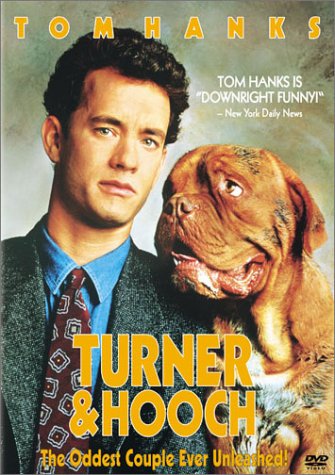
Turner and Hooch trailer
https://www.youtube.com/watch?v=GTExiWzvJlo
2. Red Dog: This Australian film is based on a true story. Red Dog is a traveling dog who settled among a group of miners working in an ore excavation site, becoming the community pet. Soon, the miners started to tell the dog their secrets and their problems. All goes well until an American, John Grant, joints the group. Red Dog decides that Grant will be his human, and the two form a strong bond. One day Grant goes out and tells Red Dog to wait for him at home. However, Grant dies and never returns. The miners mourned Grant’s death and forgot about Red Dog, who stayed at Grant's home and waited for three days. Then he decided to search for his master. Truly, some dogs are only good for one human. Hachiko, the famous dog in Japan waited for 14 years for his master. The book, The Hardscrabble Chronicles, also talks of a dog that kept returning to the abandoned home of his dead master. Red Dog is a tearjerker, but the afterlife scenes were very nice. If you want to buy Red Dog you can get it here:
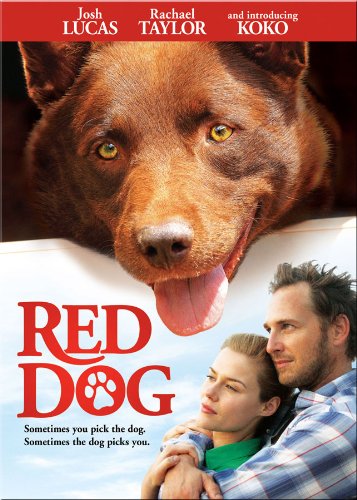
Below is a list of 10 old movies that, in sequence show how we grew in our understanding and knowledge of animals; and how we used to treat them before.
1. Turner and Hooch: There is no one quite like Tom Hanks, and his movie, Turner and Hooch, was, for me, far more funny than Marley and me. However, as in the case of the TV show Lassie (that made me first fall in love with dogs as a child), there were scenes that were unrealistic about dog intelligence. Also, there were some scenes that wouldn't be acceptable today, for instance, scenes when Hooch was drinking beer. Today that would be considered dog abuse. But Cesar Milan wasn't famous yet, so we can forgive this movie. Altogether, it was extremely entertaining and touching, such as the scene where Hooch mourns his master's death. Dogs really do get attached to their human alpha. If you want to buy the movie, you can get it here:

Turner and Hooch trailer
https://www.youtube.com/watch?v=GTExiWzvJlo
2. Red Dog: This Australian film is based on a true story. Red Dog is a traveling dog who settled among a group of miners working in an ore excavation site, becoming the community pet. Soon, the miners started to tell the dog their secrets and their problems. All goes well until an American, John Grant, joints the group. Red Dog decides that Grant will be his human, and the two form a strong bond. One day Grant goes out and tells Red Dog to wait for him at home. However, Grant dies and never returns. The miners mourned Grant’s death and forgot about Red Dog, who stayed at Grant's home and waited for three days. Then he decided to search for his master. Truly, some dogs are only good for one human. Hachiko, the famous dog in Japan waited for 14 years for his master. The book, The Hardscrabble Chronicles, also talks of a dog that kept returning to the abandoned home of his dead master. Red Dog is a tearjerker, but the afterlife scenes were very nice. If you want to buy Red Dog you can get it here:

3. Born Free:
We’ve heard many stories of people who raised lion cubs and eventually set them
free into the wild. But this 1966 movie is the first film that brought to the
fore the idea that wild animals aren’t meant for captivity, and that zoos are cruel. Born Free is the true story
of Joy and George Adamson who lived in Kenya and raised Elsa, a lion cub. One
day Elsa caused an elephant stampede. This angered neighbors who demanded that
she be sent to a zoo. Joy insisted that Elsa should instead be rehabilitated to
return to the wild. They were given three months to train Elsa to find her wild side. They did this by slowly acclimatizing her to a wild lion reserve. They would leave her alone in the reserve,
lessening her food, and lengthening her stay at the reserve each time. As days turned to weeks Elsa would wait sadly for her people to get her. She had a hard time learning how to hunt. The actual photo of Elsa before
she mastered survival in the wild is heartbreaking, as you can literally see
her ribcage. But more important, Elsa learned how to live independently in the wild. the Adamsons return to England, but visit
one year later, returned to africa to visit Elsa. She was doing fine, and she introduced them to her new family. If you want to buy the movie, click below.
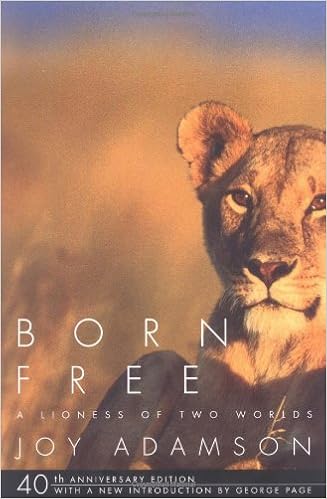
Tribute to George and Joy Adamson, Elsa the Lioness and Born Free!

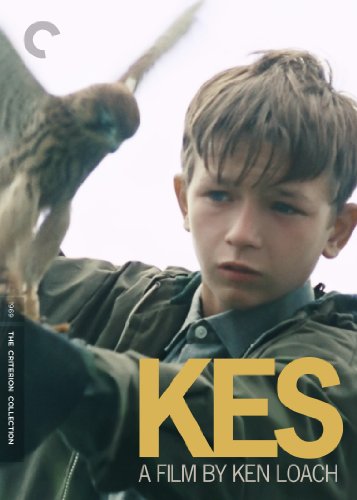
https://www.youtube.com/watch?v=HRYvUpsrqmg



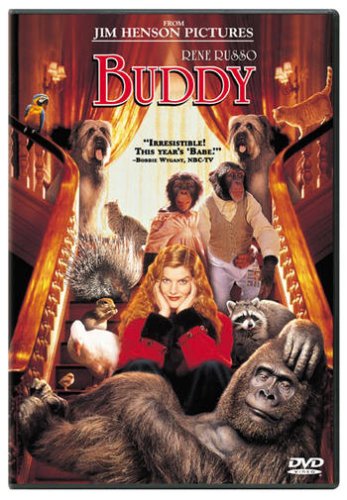

Tribute to George and Joy Adamson, Elsa the Lioness and Born Free!
4. Jane Goodall: Beauty and the Beasts:
This is a documentary about Jane Goodall’s pioneer studies of chimpanzees in
the wild. She was supported by Louis Leaky through a grant. Leakey preferred women who were not scientists. (The last
scientist he sent observed chimpanzees from the window). Goodall climbed to the
mountaintop and stayed there all day, taking notes for three months. By the
third month, the chimpanzees approached her. Goodall’s studies pioneered tremendous
information to help mankind understand a great deal about the nature of chimpanzees in the wild. If you would like to know more about Goodall's work with chimpanzees, here's a link:

5. Kes:
We wanted to include a movie about birds, but didn’t expect to find this
beautiful British film. Billy Casper, 15, is bullied at home and at school (by
his teachers). Casper’s friends are rough guys. One day Casper discovers a nest
of Kestrels (European falcons) on top of a wall. He asks the homeowner if he
can climb the wall to take a look. The homeowner agrees, and Casper takes one kestrel
home. He then steals a library book on falconry, names his bird Kes, and trains
it. When his teachers learn of Kes, Casper gains new respect at school. His teacher
visits him to see Kes, and they talk of how Kes will always be wild, is
extremely beautiful and deserves respect. Downside: Casper kills little birds to feed
Kes. But then, that’s the nature of the world. Some animals are carnivores, and
they kill smaller animals for nutrition.

6. Born to Be Wild:
We watched this documentary because Birute Galdikas is the second of the
triumvirate of Louis Leakey’s “angels” that he sent into the wild to study apes
in their habitat. (The third “angel” is Dianne Fossey who studied gorillas).
Galdikas worked in Indonesian Borneo with orphaned orangutans that she raised
and sent back to forest. Interestingly, orangutans are uncomplicated and sweet.
Each has a distinct personality. Even when they returned to the wild, they would
visit Galdikas, sometimes with a baby chimp in tow, and share a bowl of noodles
with her. The documentary also features Dame Daphne Marjorie Sheldrick of Kenya,
who raises orphaned elephants and returns them to the wild. Unlike orangutans,
baby elephants are complicated, deeply emotional, easily traumatized and can
never be left alone. Their mahout (keeper) sleeps with them, like a surrogate mother.
What’s more, the elephants chose their own mahouts, sensing who would be the
right fit. The first batch of orphaned elephants were eventually released to the
wild. Sheldrick then raised a second batch of orphaned elephants. She transported
miles away to a new nursery. When they got there, the first batch, now fully grown,
came to visit. They taught the orphan elephants how to bathe in the sand, embraced
them with their trunks and essentially seemed to say that they would be
accepted when they are ready for the wild.

7. Gorillas in the Mist:
This is a movie about Dianne Fossey, who is Louis Leakey’s third “angel”. She
was also untrained in the work that she was told to do. But Fossey, like
Goodall, followed her instincts. For months she climbed the mountains every
day, until she found a group of gorillas. She gained their trust by following
their movements – pretending to eat a leaf, scratching her hair, and even
learning how to make their sounds. However, Fossey came to love the gorillas so
much that she had to combat poachers, and did so by playing on their
superstitions and pretending to be a witch. This is an interesting film because
Fossey in the end seems to identify so closely to the gorillas that she almost
felt more like one of them than a human. It is believed that Fossey was
murdered by poacher because she took away a sachet of his that he believed held
all of his courage.
http://www.amazon.com/Gorillas-Mist-Sigourney-Weaver/dp/B00AVRO1Q6
8. Buddy:
Buddy is the true story of a sickly gorilla that was adopted by Trudy Lutz, a
millionaire (married to a doctor) who filled their mansion with four chimpanzees,
a kitten, a horse, a raccoon, geese, and six award-winning Briard dogs. The
chimpanzees were bathed and dressed like children, taught to eat at the dining
table using cutlery, and slept in individual large cages with a bed, sofa, and
work table. Buddy, the gorilla, however, was particularly clingy to Lutz and
didn’t know his own strength. Buddy, like the chimps, bathed, wore clothes, ate
at the dining table, put his own plate back in the kitchen and was given
dessert. Gertrude Lutz did all this at a time when there was not much
information about apes in the wild. In the end, she realized that Buddy needed
to be set free. She brought Buddy to a gorilla sanctuary where he lived in an
enormous space with other gorillas, and with trees that had his favorite fruits
and nuts.

Buddy (1997) - Trailer
No comments:
Post a Comment